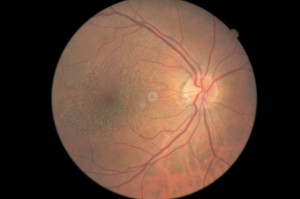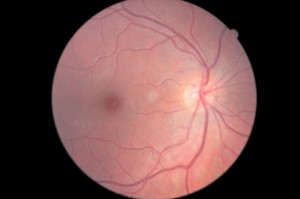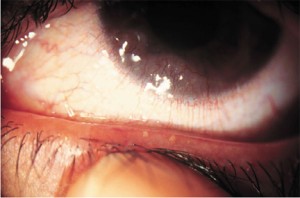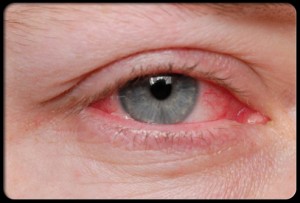An Epiretinal Membrane (ERM) is also known as Cellophane Maculopathy or Macular Pucker. Sometimes it is simply referred to as a “wrinkle.” In most cases, a Posterior Vitreous Detachment (PVD) has occurred. This vitreous activity causes the macula to generate cells and create a scar-like membrane. This thin tissue layer can contract and cause a wrinkle.

In the above picture of the inside of an eye, the whitish irregularities on the left side is the membrane. The photo below shows a normal macula, note the the smooth and regular color on the left side. The dark spot to the left in each photo is the macula.
The macula provides sharp, central vision and allows us to see details. Any change in the surface, like a wrinkle, will cause distortion and blur. ERM usually occurs in one eye only. The initial onset of the blur and distortion can be very alarming, but most people get used to it depending on the extent. Sometimes it resolves on its own, but mostly it stays the same. If you are noticing this type of vision change it is very important to have an examination for a correct diagnosis. Blur and distortion can be symptoms of other conditions, such as a macular hole.
In cases where the vision is significantly impaired a surgical procedure can be done. A vitrectomy is performed to remove the vitreous, then very delicately the surgeon peels the membrane off of the macula. This often reduces distortion and improves the vision, but not completely. Retinal surgery is not without risks, the most common risk is the development of cataracts, but any damage to the macula during the procedure can cause permanent visual impairment.
ERM is not the same as Macular Degeneration.










